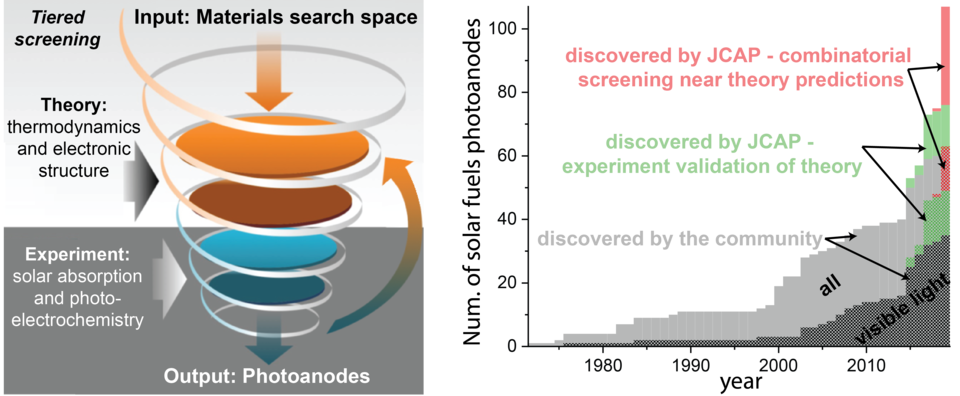Integrated research drives the creation of materials knowledge for clean energy

The Joint Center for Artificial Photosynthesis discovered metal oxides having sufficiently low photon energy onset for efficient solar photoelectrochemistry.
Created September 2, 2021

